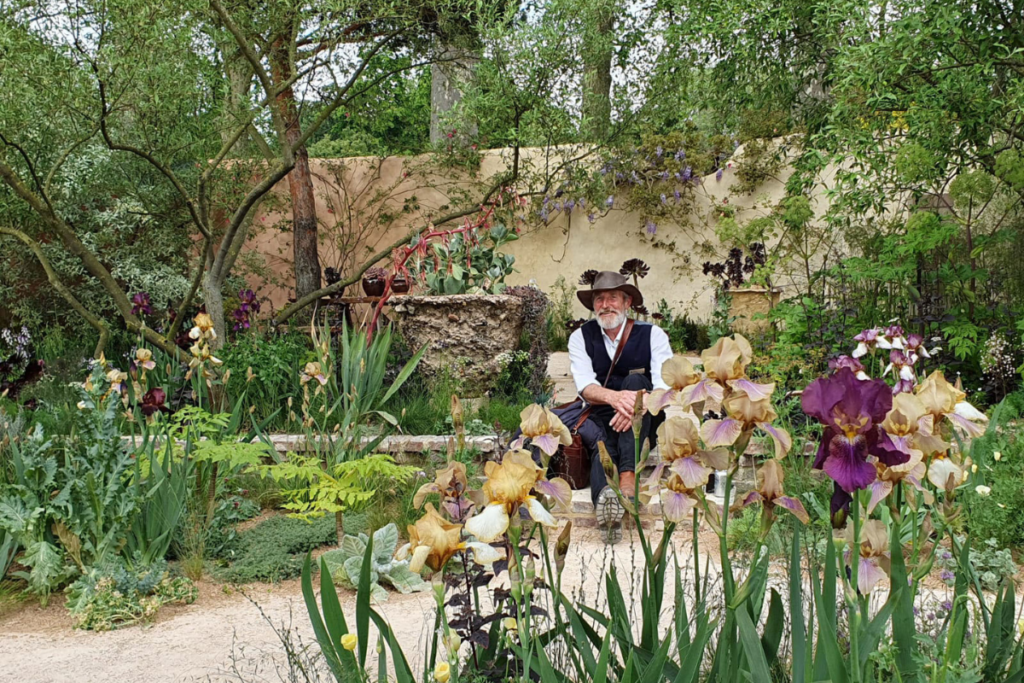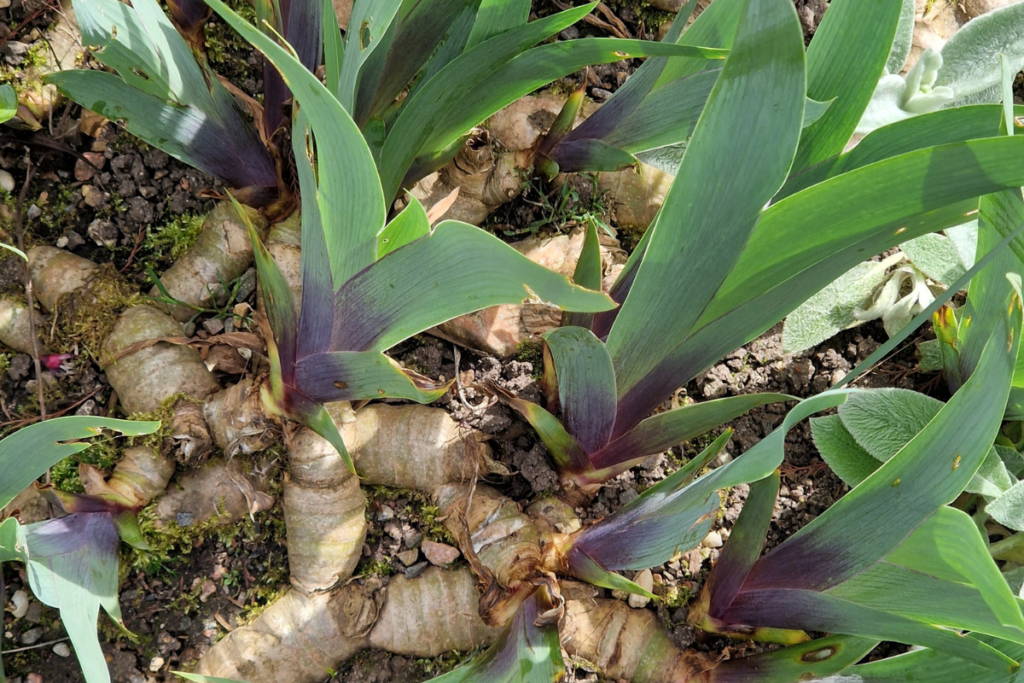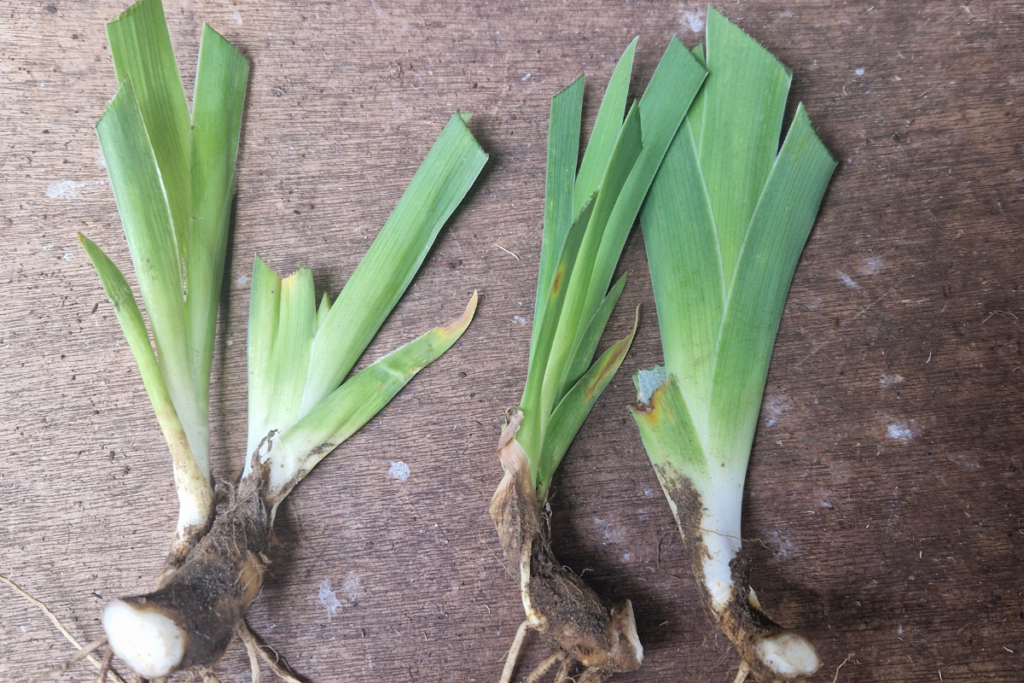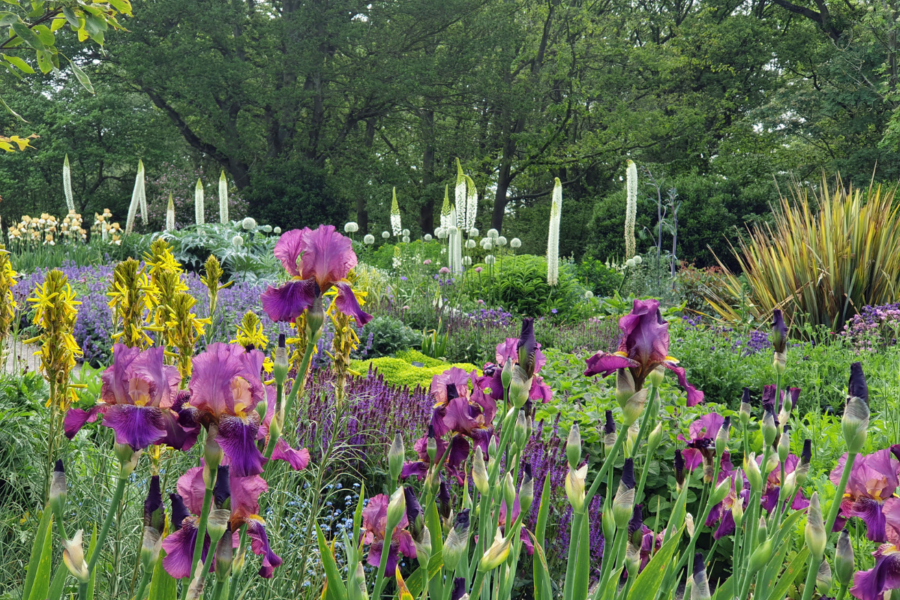A sunny spot but don’t overwater says Beth Chatto Garden’s growing manager, Marc
“The countdown is on for the premier show of the horticultural year, RHS Chelsea Flower Show, and we can’t wait to see this year’s gardens. Last year one of our favourites was Sarah Price’s garden and we were very proud to have supplied many of the Iris’s displayed, so in honour of the Iris here’s Marc explaining more about his favourite plant.”
Whether you love them or loathe them, it cannot be denied that the tall, bearded iris is a statement plant and one which drives the need, in some of us, to collect them. I had never considered myself an iris collector, but when I started writing this article, I discovered that I have clearly become one.
With more than 50 different cultivars in our collection, the effect is breathtaking when they flower en-masse on our stockbeds – it is like an explosion in an artist’s paint box. This is a very apt description as over half within our collection are Benton irises, bred by Sir Cedric Morris, celebrated painter, plantsman and the creative force behind the famous gardens at Benton End. He was a notable iris breeder and although many of his 90 or so introductions have been lost, several have been rediscovered and their names verified.
Beth’s own connection with Sir Cedric Morris began in the 1950s, and their friendship grew over the years based on their mutual love of plants. Cedric became Beth’s mentor as well as a rich source of plants, many still found in the garden today.
For some, a bearded iris is a floral firework, almost over before it has begun and hardly worth the effort. With the average iris only flowering for a month, I can understand this point of view. However, for me, the anticipation is the thing, starting with the build up as the flower stems gain height, reaching for the sky before their final eruption into flower like the finale of spring and the opening of the summer season. It is well worth waiting for.

How to grow and care for bearded irises
Plants can be divided every three, four or five years before they become overcrowded and begin to flower less. As the rhizomes multiply and spread out, the fan-shaped foliage forms a circle shading the rhizomes, which eventually results in less blooms.

Lift and divide bearded irises a month after they have finished flowering. Plant out between July and mid-October to allow them to get well established before the winter sets in. Bearded irises need plenty of heat and sun and the soil must have very good drainage. Ideally they will be well spaced at approximately 30-40cm (30-40in) apart. Any closer and they will need to be thinned out more often to maintain flowering, and to reduce diseases.

The rhizomes like to be exposed, sitting on the surface with the roots securely anchored in the soil. To ensure they receive maximum light, plant rhizomes so they face the sun and keep them free of weeds to reduce shade. Water the irises after planting, but once established they need very little irrigation. In fact, it is better to under-water than over-water a bearded iris, as too much moisture can lead to rotting.

Some of our favourite bearded irises:
Iris ‘Jane Phillips’
Iris pallida ‘Argentea Variegata’
Benton ‘Menace’
Benton ‘Dierdre’
Find more tips, advice and articles like this at the Amateur Gardening website. Subscribe to Amateur Gardening magazine now.





